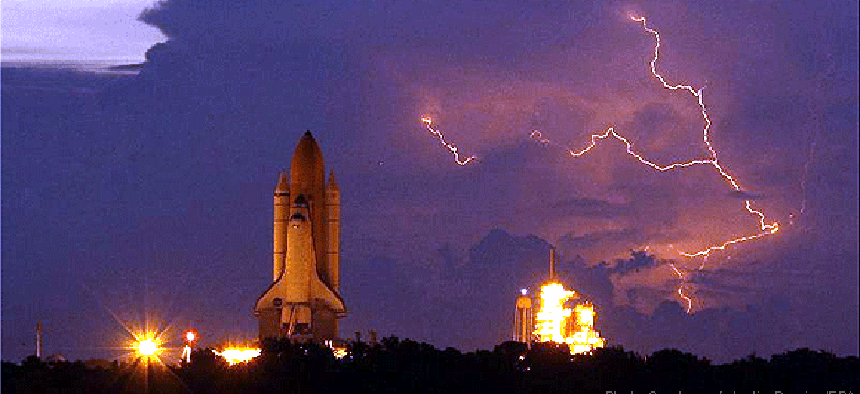NASA, NWS blazed an early path on lightning detection systems

Long before companies offered commercial total lightning detection services to government, NASA and National Weather Service researchers experimented with homegrown systems.
Government agencies have been getting a better understanding of how severe weather develops by tapping into lightning data — particularly cloud-to-cloud lightning — provided by private companies. But the National Weather Service and NASA have experience of their own with that kind of data.
NASA, in fact, has been a pioneer in lightning detection systems. Severe weather is a major concern in rocket launches, so long before Total Lightning Information was available commercially, the National Weather Service partnered with NASA to research correlations between in-cloud lightning and tornado development in tropical storms in southern Florida.
NASA deployed its Lightning Detection and Ranging (LDAR) system in 1990 at the Kennedy Space Center. It consists of six observer stations to monitor radiation in the 66 MHz frequency band, each placed about 8 kilometers from a central station with a computer and a display station. The observing stations can detect lightning discharges from tens of kilometers away and measure the time of detection to within 10 nanoseconds. By taking timing data from at least three stations, the location of the discharge can be pinpointed and plotted on a three-dimensional display on the workstation.
The advantage of LDAR was that, unlike commercially available lightning detection systems at that time, it could detect cloud discharges as well as ground strikes. “As a result, the LDAR system detects lightning at least as early as other systems do (sometimes 10 to 20 minutes earlier), thereby providing greater warning lead times,” a 1998 NASA technical article explained. The extra data also allowed forecasters to terminate lightning warnings more quickly, sometimes as much as an hour earlier.
The LDAR display showed constantly updated lightning flash data in three dimensions over a five-minute period.
In 1995, the Massachusetts Institute of Technology developed a workstation to display LDAR data (the Lightning Imaging Sensor Data Application Display, or LISDAD) in a simplified way that also could show trends over time.
In the mid-1990s, both the NASA LDAR and a prototype LISDAR workstation were used side-by-side at the Weather Service’s Melbourne, Fla., facility to monitor cloud lightning activity in Tropical Storms Gordon (1994) and Josephine (1996) to see if it could be used to forecast tornado activity in the storms. The correlations were not exact, but the study did find that “cells that exhibit [cloud-based lightning activity] appear to imply the presence of stronger updrafts than within adjacent cells which lack lightning.”
A problem with LDAR was that the area it covered was small, providing limited research data and no way to extend the findings to the rest of the country. With the recent development of commercial networks capable of producing Total Lightning Information across North America, NWS now is working to incorporate this data into its Advanced Weather Information Processing System.





